Collateral Damage
- By Gaurav Nandi
- April 25, 2025
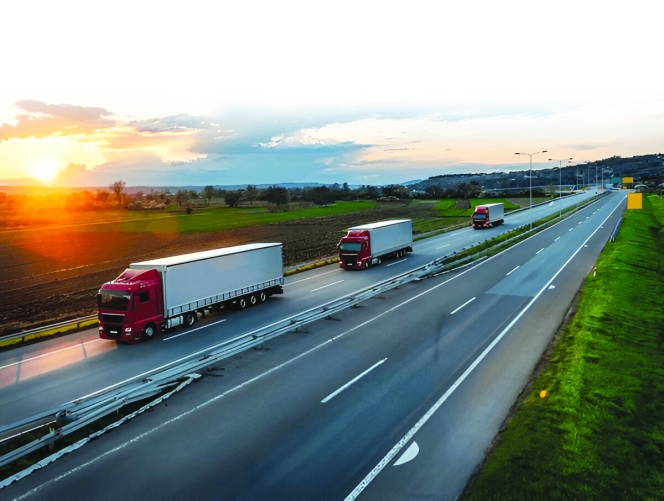
Retread tyres in Malaysia are unfairly blamed for road accidents. While the tyres enjoy a pristine reputation in export markets, the notoriety within the local market stems from the lack of ability to differentiate them from low-cost and low-quality tyres that fail to comply with performance standards owing to overloading, maintenance and misapplication.
A total of 1.35 million lives are lost each year in road accidents, according to data from the Ministry of Transport Malaysia. Another data set from Statista highlighted that the South Asian country witnessed 545,000 road accidents in 2022, an increase from the previous year data of 370,000.
A large portion of these accidents involve commercial vehicles and the blame is also shared by retread tyres. A recent news report highlighted rising concerns within the Malaysian parliament to ban the use of retread tyres of commercial vehicles citing safety norms.
The situation seems ironic as the Malaysian retread industry enjoys a pristine reputation in export markets. Yet, the notoriety of retread tyres on home turf might be seen as ‘collateral damage’.
Speaking to Tyre Trends exclusively on why retread tyres remain a scapegoat for road accidents, Tyre Retreading Manufacturers Association of Malaysia (TRMAM) President Edmund Wong said, “Retread tyres are often unfairly blamed for road accidents because the public struggles to differentiate them from low-cost, low-quality tyres that fail due to poor maintenance, overloading and misapplication. Many people mistakenly associate tyre debris, especially when it reveals exposed steel cords, with retreads. However, this type of failure is more commonly linked to cheap, substandard tyres rather than retreads, which, when properly maintained and used correctly, can be as safe as new tyres. The focus on retreads allows the real issues such as inadequate tyres maintenance and overloading to remain overlooked.”
IMPROVING ROAD SAFETY
Malaysia has a higher road fatality rate compared to ASEAN peers like Singapore, largely due to motorcycle-related deaths, which make up over 65 percent of fatalities.
Malaysia’s road safety goals have reportedly fallen short despite setting out clear targets. In 2014, the government aspired to reduce road fatalities by 50 percent by 2020 as part of its alignment with United Nations’ Decade of Action for Road Safety 2011-2020. The initiative was a failure and the same target was reiterated in Malaysia Road Safety Plan 2022-2030.
 Current figures also raise questions over the supposed success of the target. Commenting on ways that could make the reduction target a reality, Wong noted, “To reduce road fatalities by 50 percent by 2030, Malaysia should enforce traffic laws strictly, including penalties for speeding and disobeying traffic lights, while expanding automated systems like speed and red-light cameras. Enhancing road infrastructure with safety audits, smart technology and dedicated motorcycle lanes is essential.”
Current figures also raise questions over the supposed success of the target. Commenting on ways that could make the reduction target a reality, Wong noted, “To reduce road fatalities by 50 percent by 2030, Malaysia should enforce traffic laws strictly, including penalties for speeding and disobeying traffic lights, while expanding automated systems like speed and red-light cameras. Enhancing road infrastructure with safety audits, smart technology and dedicated motorcycle lanes is essential.”
“Malaysia can adopt best practices, such as dedicated motorcycle lanes, public education campaigns and improved road infrastructure, while learning from Singapore’s success in enforcement, infrastructure and safety culture. Public awareness campaigns should target risky behaviours including running red lights and promote defensive driving. Protecting vulnerable road users, especially motorcyclists and pedestrians, through improved infrastructure and safety regulations is also crucial,” he added.
Alluding to why stringent safety campaigns or regulatory measures are not undertaken to reduce motorbike fatalities, he noted, “The lack of stringent safety campaigns or regulatory measures targeting motorbike users in Malaysia is due to several factors. Firstly, motorbikes are a vital mode of transport for many due to affordability and accessibility, especially in rural areas, making stricter regulations politically sensitive. Secondly, enforcement of existing laws such as helmet use and licensing is inconsistent, particularly in rural regions, allowing unsafe practices to persist. Thirdly, cultural factors like risk-taking behaviour, resistance to change and low awareness of safety risks hinder the adoption of safer practices. Lastly, limited resources, both financial and infrastructural, result in insufficient investment in targeted campaigns and dedicated motorcycle lanes, leaving riders vulnerable.”
CLOSING GAPS
Wong iterated that to improve road safety and support the retreading industry in Malaysia, several regulatory gaps and enforcement lapses need to be addressed. One significant issue is the inconsistent enforcement of tyre standards, especially for imported new tyres.
While Malaysia requires that imported tyres have certifications like the E-mark, DOT or MS, these standards can sometimes fail to verify the genuineness and reliability of the tyres, leading to concerns about the quality and safety of some imports. This lack of stringent checks on tyres authenticity puts road users at risk and undermines confidence in tyre safety.
Additionally, there is a gap in regulations requiring regular tyre maintenance checks, particularly for retread tyres. Without mandatory inspections for tread depth, pressure and overall tyre condition, vehicles, especially commercial fleets, are at higher risk of tyre-related accidents.
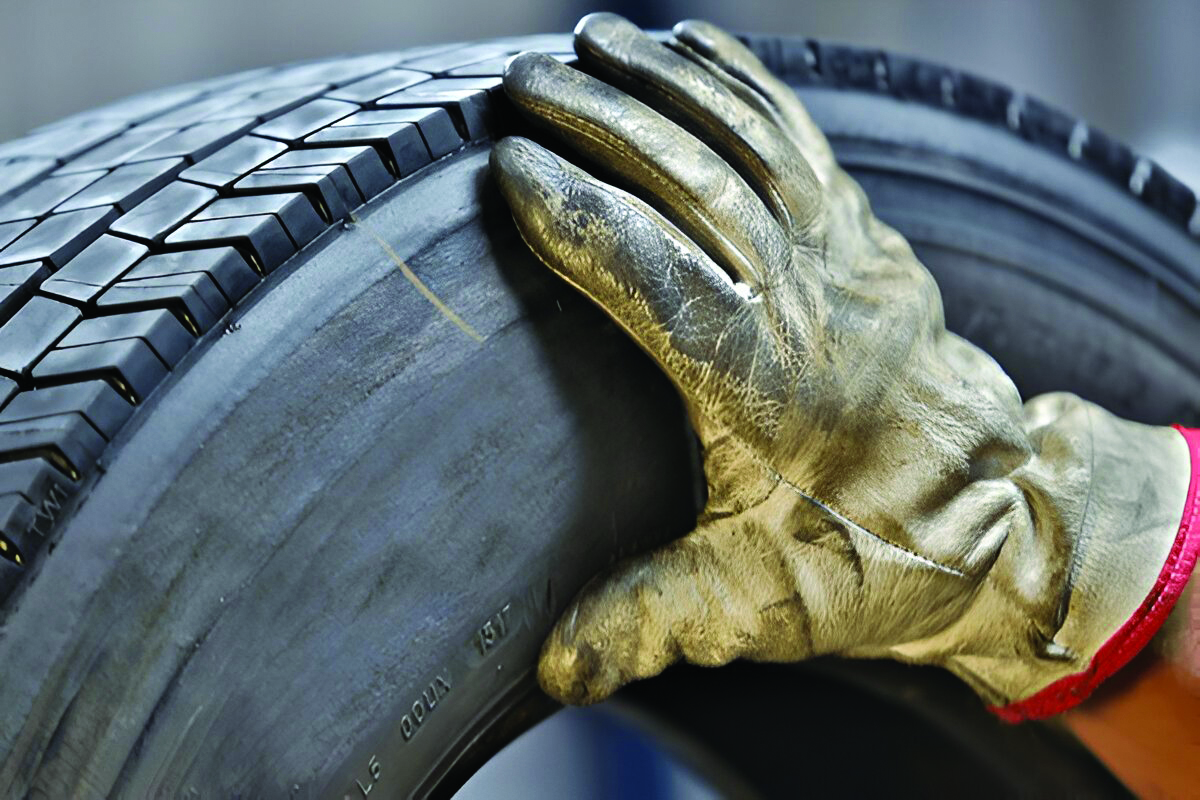
Another issue is the weak enforcement of penalties for overloading and the misapplication of tyres such as using retreads in unsuitable conditions. Overloading vehicles puts excessive stress on tyres, increasing the likelihood of tyre failure, and stricter penalties are needed to deter this dangerous practice.
There is limited education on the benefits of retreads and how to use them safely, which affects their acceptance and proper usage. Implementing campaigns that highlight the safety, environmental and economic benefits of retreads could help improve perceptions and encourage safer practices.
Moreover, government procurement policies should prioritise retread tyres for public transportation fleets, encouraging their use across sectors and providing a market boost to the retreading industry.
Lastly, there is a lack of clear regulations on tyre end-of-life management including guidelines for recycling and disposal. Establishing clear regulations for the responsible management of worn-out tyre, including retreads, would support the circular economy and further promote the sustainability of the retreading industry.
Addressing these regulatory gaps and enforcement lapses would not only improve road safety but also foster the growth of a reliable, safe and sustainable retreading industry in Malaysia.
REPUTATION REVIVAL
The shadow of malignance over the local retread industry is daunting, especially considering its stellar reputation abroad. A methodical plan is urgently needed to change the prevailing perception.
Commenting on how the industry can leverage its foreign reputation to promote retreads domestically, Wong explained, “Malaysia can leverage its reputation in the global retreading industry to promote retreads domestically by focusing on education, policy support and sustainability initiatives.”
“Firstly, educating the public about the benefits of retreads, such as safety, environmental advantages and cost-effectiveness, can shift perceptions. Secondly, incentivising businesses to adopt retread tyres would not only increase its usage but also align with sustainability practices. Retreads significantly reduce waste by reusing tyre casings, contributing to lower carbon footprints and less landfill waste. Offering tax breaks, rebates or financial incentives to businesses that adopt retreads can encourage the adoption of this eco-friendly practice, benefiting both companies and the environment,” he added.
He also noted that Malaysia has a well-established certification system with Malaysian Standard 224 (MS 224), which sets high-quality standards for retread tyres. This national standard ensures that domestically produced retreads meet rigorous safety and quality requirements, reinforcing consumer confidence and helping local manufacturers maintain global competitiveness. By promoting this certification and its benefits, Malaysia can further build trust in its retreading industry and drive domestic demand for high-quality retreads.
He also noted that partnerships with universities, research institutions and organisations such as the Malaysian Rubber Board (MRB) could play a pivotal role in establishing Malaysia as a hub for innovation in tyre retreading. These collaborations would enable research and development focused on improving the quality, safety and efficiency of retread tyre, which could enhance their appeal domestically and internationally.
“The Malaysian Rubber Board has extensive expertise in rubber technology and the development of new rubber compounds, which are crucial for retreading. By working with these organisations, Malaysia could explore advanced rubber materials and improve the durability and performance of retread tyres. MRB’s research could focus on optimising the rubber used in tyre retreading, enhancing its resilience and performance under various road conditions, thus improving the overall safety of retreads. Universities and research institutions bring additional expertise in materials science, engineering and sustainability and can help address any technical gaps in the retreading process. They could collaborate with retreading companies, fleet operators and tyre manufacturers to develop new retreading technologies, better tyre monitoring systems and more efficient processes,” explained Wong.
He added, “These partnerships could also produce credible, science-backed data on the reliability and safety of retread tyre, helping to build public trust and dispel misconceptions about retreads.”
FILLING DATA GAPS
The lack of local data to validate the reliability and safety of both retread and new tyres in Malaysia stems from several key factors, according to Wong.
“Primarily, there is a significant gap in research due to the lack of collaboration between tyre manufacturers, retreaders, fleet operators, research institutions and government agencies. Without cooperation among these stakeholders, there is little incentive or infrastructure to collect and analyse tyre failure data in the local context. This leads to a situation where tyre failure research is outdated or non-existent, leaving the industry to rely on studies from other countries such as US, which may be many years old and not reflective of current tyre technology or local conditions,” noted Wong.
He added, “This problem is not unique to Malaysia; many countries face similar challenges in gathering and sharing tyre-related data. For example, tyre debris reports and studies on tyre failures tend to be infrequent and may not accurately capture the complexities of modern tyre usage, road conditions or fleet operations. To address this gap, a collaborative effort among different stakeholders, both local and international, could be instrumental.”
Collaborations could fund and conduct comprehensive studies on tyres performance under local conditions. By sharing data and expertise, these stakeholders can develop a more accurate understanding of the causes of tyre failures, improve maintenance practices and promote better safety standards for both new and retread tyres.
Additionally, international partnerships could allow for access to global tyre failure databases and new research, enabling Malaysia to adopt best practices from countries like US, Japan or the EU, where more tyre safety research is available.
Establishing a framework for ongoing research and data sharing with regular updates and reports would help fill the data gap and improve tyre safety standards locally. This collaborative approach could ultimately lead to the development of localised tyre safety standards, improved regulations and more informed decision-making by all stakeholders involved.
NEW LEARNING
According to Wong, Malaysia can learn important lessons from countries like Japan and UK, where retread tyres are promoted effectively for their cost-efficiency and environmental benefits. Both Japan and the UK have robust local manufacturing industries for new, high-quality tyres, which ensure a consistent supply of durable tyre casings for retreading.
This industrial advantage helps protect the respective retreading industries by ensuring the availability of reliable casings that meet safety and performance requirements. Japan enforces stringent standards for both new and retread tyres through the Japanese Industrial Standards (JIS) such as JIS D 4202, which defines specifications for automobile tyres. These regulations ensure high-quality tyre production and maintenance, supporting a thriving retreading ecosystem.
Similarly, UK relies on the ‘E’ mark certification system, which aligns with European safety and performance regulations. The ‘E’ mark, prominently displayed on compliant tyres, indicates that a tyre has undergone rigorous testing and meets safety standards. This harmonised approach in UK ensures that only certified-quality tyres are used, reducing risks and building trust in retread tyres.
In Malaysia, the absence of a local new tyre manufacturing industry for trucks presents a challenge. The reliance on imported new tyres, coupled with the fact that Malaysia’s new tyre standard (MS 1394) is not compulsory, allows low-cost and lower-quality imports to flood the market.
These tyres often produce casings unsuitable for retreading, which undermines the retreading industry. To address these issues, Malaysia could make MS 1394 mandatory for new tyres, ensuring better-quality casings and fostering trust in retreads.
Additionally, promoting awareness of retreads’ economic and environmental benefits, strengthening enforcement of Malaysian Standard 224 (MS 224) for retread quality and offering incentives for their adoption could help the industry grow.
Technology, such as tyre monitoring systems, can play a significant role in addressing concerns about retread tyres and improving road safety. These systems provide real-time data on tyre pressure, temperature, tread depth and overall tyre health, helping to ensure that all tyres, including retreads, are properly maintained.
By monitoring tyre performance, these systems can detect early signs of wear, overloading or misapplication, reducing the risk of tyre failure. This not only enhances the safety of retread tyre but also helps prevent accidents caused by poor tyre maintenance or low-quality tyres, leading to a change in perception.
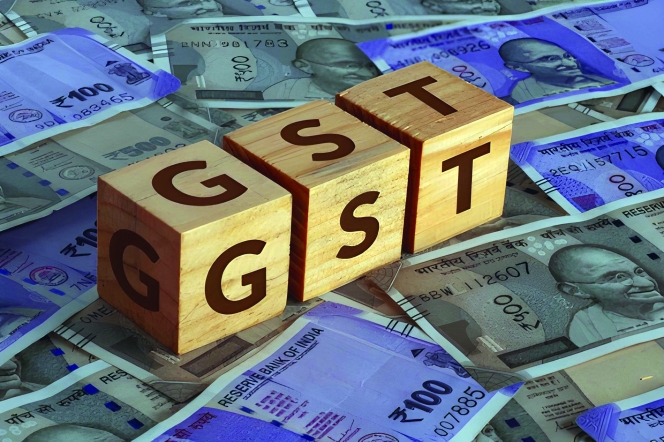
The rollout of GST 2.0 marks a defining moment in India’s economic journey – a reform that may well prove even more consequential than the original introduction of the Goods and Services Tax. Especially for a sector like tyres, the recent reduction in (GST) on tyres is far more than just a change in numbers. It is a transformative step that touches every wheel turning on India’s roads – from a farmer’s tractor to a trucker’s long-haul trailer and from a commuter’s scooter to a construction vehicle powering the nation’s infrastructure.
For years, tyres were taxed at 28 percent – the highest GST slab, clubbed with luxury and demerit goods. This categorisation never truly reflected the essential role tyres play in our everyday lives. Tyres are not a luxury. They are a fundamental enabler of mobility, supporting the movement of people and goods across cities, towns and villages. By bringing GST rates on tyres down to a more rational level, the government has addressed a long-standing anomaly and set the stage for widespread benefits across the economy.
The most visible impact of this move will be felt on the ground – literally. Lower GST means more affordable tyres for all users. Especially for transporters and fleet operators, tyres account for a significant chunk of vehicle running costs. A reduction in tax translates into lower replacement costs, freeing up working capital and improving operational margins. Farmers, small traders, delivery personnel, service providers, transporters – every segment that relies on mobility will feel this relief.
India has been working hard to bring down logistics costs, which are believed to be about 13–14 percent of GDP – much higher than global benchmarks. Tyres have a direct bearing on vehicle operating efficiency, fuel consumption and maintenance schedules. When tyres become more affordable, operators can replace tyres on time, and run vehicles more efficiently.
This naturally leads to lower logistics costs. Reduced logistics costs ripple across the value chain, helping industries move goods faster and at lower cost. This aligns perfectly with India’s ambition to become a more globally competitive manufacturing and trading hub.
Tyre industry’s story is not just urban – it’s deeply rural as well. Tractor tyres, power tiller tyres and tyres for animal-drawn vehicles are integral to the agricultural economy. A reduction in GST brings meaningful relief to farmers and small cultivators who rely on these tyres for their daily operations. By easing this cost, the government has extended direct support to rural mobility and agricultural productivity – an often underappreciated but critical outcome of this reform.
One of the most powerful yet often overlooked impacts of this decision lies in road safety. Worn-out tyres are a major cause of road accidents, particularly on highways. High replacement costs often lead to tyres being used well past their safe life.
With lower GST making new tyres more accessible, both individual motorists and commercial fleet owners are more likely to replace tyres on time, keeping vehicles safer and reducing accident risks. This complements the government’s broader road safety agenda, making highways not just faster but safer for everyone.
For the Indian tyre industry, which is one of the largest in the world, this reform is a game changer. It creates a more balanced tax structure, supports better cash flow, improves compliance and strengthens the competitiveness of domestic manufacturers. It will also encourage investment and capacity expansion, enabling the industry to serve growing domestic demand and tap export opportunities more effectively.
The GST reduction on tyres is a strategic, forward-looking policy decision that will benefit the entire mobility ecosystem. It acknowledges the essential role tyres play – not just as a product, but as a critical enabler of transportation, logistics, rural livelihoods and road safety.
As this reform takes root, its positive impact will be felt by consumers, businesses, farmers and industries alike. The tyre industry, represented by ATMA, welcomes this move wholeheartedly and remains committed to working alongside the government to strengthen India’s journey towards affordable, efficient and safe mobility for all.
The author is Director General of the New Delhi-based tyre industry association, Automotive Tyre Manufacturers’ Association (ATMA).The views expressed here are personal.
WACKER Secures Gold Medal In EcoVadis Sustainability Rating
- By TT News
- December 18, 2025
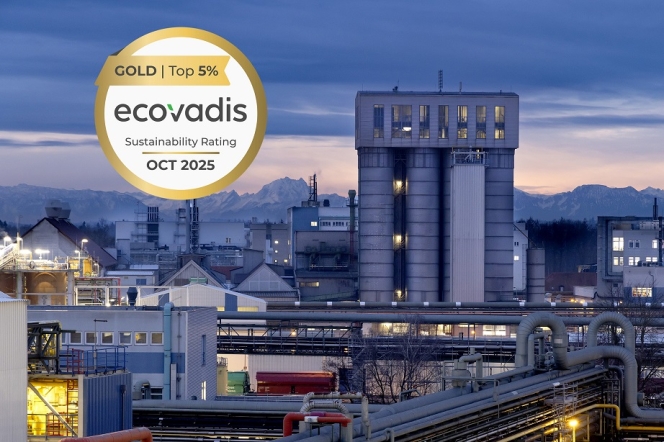
WACKER has earned the 2025 Gold Medal from the independent rating agency EcoVadis, marking its continued recognition for sustainable practices and responsible corporate governance. This distinction places the company within the top five percent of all businesses assessed by EcoVadis (over 1,000 companies globally). WACKER's overall score improved from 77 points (in 2024) to 79 points, driven largely by enhanced reporting and concrete actions focused on Scope 3 emissions and ethical standards.
The EcoVadis assessment measures the quality of a company’s sustainability management through a methodology grounded in international frameworks like the Global Reporting Initiative, the UN Global Compact and ISO 26000. Performance is scored from 0 to 100 across four core areas: environment, labour and human rights, ethics and sustainable procurement, using 21 specific indicators.
In line with its commitment, WACKER provides its EcoVadis evaluation to customers as a standardised and credible validation of its sustainability efforts. The company has also defined ambitious climate targets, aiming to halve its absolute greenhouse gas emissions by 2030 relative to 2020 levels. Progress is already evident, with a 30 percent reduction achieved as of 2024. Looking further ahead, WACKER strives to reach net-zero emissions across its operations by the year 2045.
Peter Gigler, Head of Corporate ESG, WACKER, said, “The result confirms our initiatives in many key areas. It provides our customers with invaluable proof.”
Craig Borman Appointed As Head Of OTR At BKT USA
- By TT News
- December 18, 2025
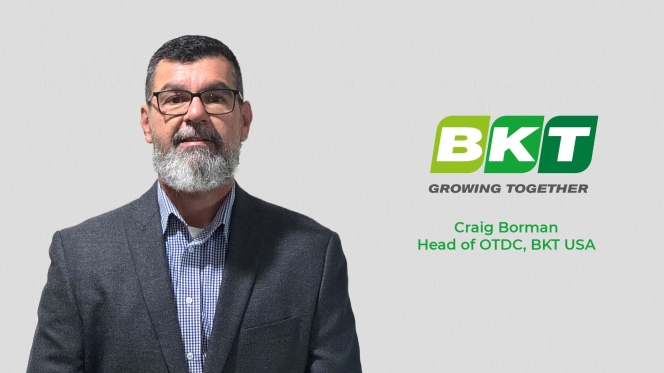
Balkrishna Industries Ltd (BKT Tires), a global leader in off-highway tyre manufacturing, has appointed Craig Borman as Head of OTR at BKT USA. The appointment is in line with BKT’s long-term strategy through 2030.
Borman brings with him 20 years of experience across off-road equipment, tyres and rubber tracks. He will play a key role in leading BKT USA's OTR team and expanding the company's presence in this market while increasing awareness of the value and dependability of BKT's range of products.
Borman said, “I’m extremely excited to join the BKT family and to build off the successes that this team has already achieved. I look forward to engaging with our partners, determining how we can accelerate our mutual growth and working towards achieving BKT’s vision of being a recognised leader in the OTR segment.”
Christian Kötz To Succeed Nikolai Setzer As Continental CEO In Planned Handover
- By TT News
- December 18, 2025
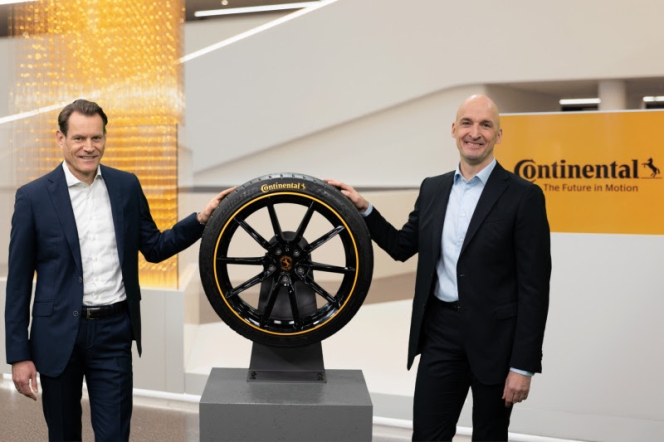
The Supervisory Board of Continental AG confirmed a significant leadership transition during its meeting on 17 December 2025. Christian Kötz will be appointed as the new Chairman of the Executive Board and Chief Executive Officer, effective 1 January 2026. He succeeds Nikolai Setzer, who will step down from the Executive Board on 31 December 2025. Setzer's departure follows more than 16 years as a board member, including the last five years in the CEO role, and occurs by mutual agreement as the company reaches a pivotal point in its strategic evolution.
This planned change in leadership aligns with the substantial progress Continental has made in its transformation into a pure-play tyre company. Major structural milestones have been achieved, including the spin-off of Aumovio and the signing of an agreement to sell the Original Equipment Solutions (OESL) business area. Regarding the planned 2026 sale of ContiTech, internal preparations are largely complete. The market outreach phase has concluded, and a structured sales process is scheduled to begin in January 2026, setting the stage for the final step in the corporate realignment.
Kötz’s extensive background within the tyre business, dating back to 1996, positions him to lead this final phase. A member of the Executive Board since 2019, his previous leadership roles within the Tires group sector included responsibility for the passenger car tyre replacement business in the EMEA region, the original equipment and commercial vehicle tyre business units and global research and development for passenger car tyres. His many years of trusted collaboration with Nikolai Setzer are expected to ensure continuity during the transition.
Kötz will lead an Executive Board comprising several key figures. Alongside him and Philip Nelles, who has headed the ContiTech group sector since 2021, are Roland Welzbacher and Ulrike Hintze. Welzbacher joined the board in August 2025 and assumed the role of Chief Financial Officer on 1 October 2025. Hintze was appointed to the board on 1 July 2025, serving as Chief Human Resources Officer and Director of Labour Relations. This board will be responsible for driving the tyre business forward, completing the corporate realignment and, following the sale of ContiTech, integrating the remaining group functions into the tyre organisation.
Wolfgang Reitzle, Chairman of Continental’s Supervisory Board, said, “Nikolai Setzer has been instrumental in shaping Continental, realigning the organisation and paving the way for three strong, independent companies. For this, he has the thanks of the entire Supervisory Board as well as my personal gratitude. With this handover, we are consolidating responsibility for the tyre business, the realignment and the remaining tasks of the group functions in one role. Christian Kötz is one of the most distinguished managers in the global tyre industry. With his extensive experience and passion for Continental, we firmly believe he is the right choice to lead the company successfully into the future.”
Setzer said, “In recent years, we have succeeded in transforming a diverse portfolio of businesses into three strong, independent champions. After 28 years at Continental, now is the right time for me to hand over responsibility to Christian Kötz. I’m extremely grateful for the journey we’ve all shared and proud of what we’ve all achieved together. I firmly believe that the tyre business, ContiTech, Aumovio and OESL have a promising future ahead.”
Kötz said, “I would like to thank the Supervisory Board for its trust and am excited about this new responsibility. Continental has been my professional home for three decades. Together with the Executive Board team and all colleagues throughout the company, we will complete the realignment and continue the success story of our tyre business.”







Comments (0)
ADD COMMENT